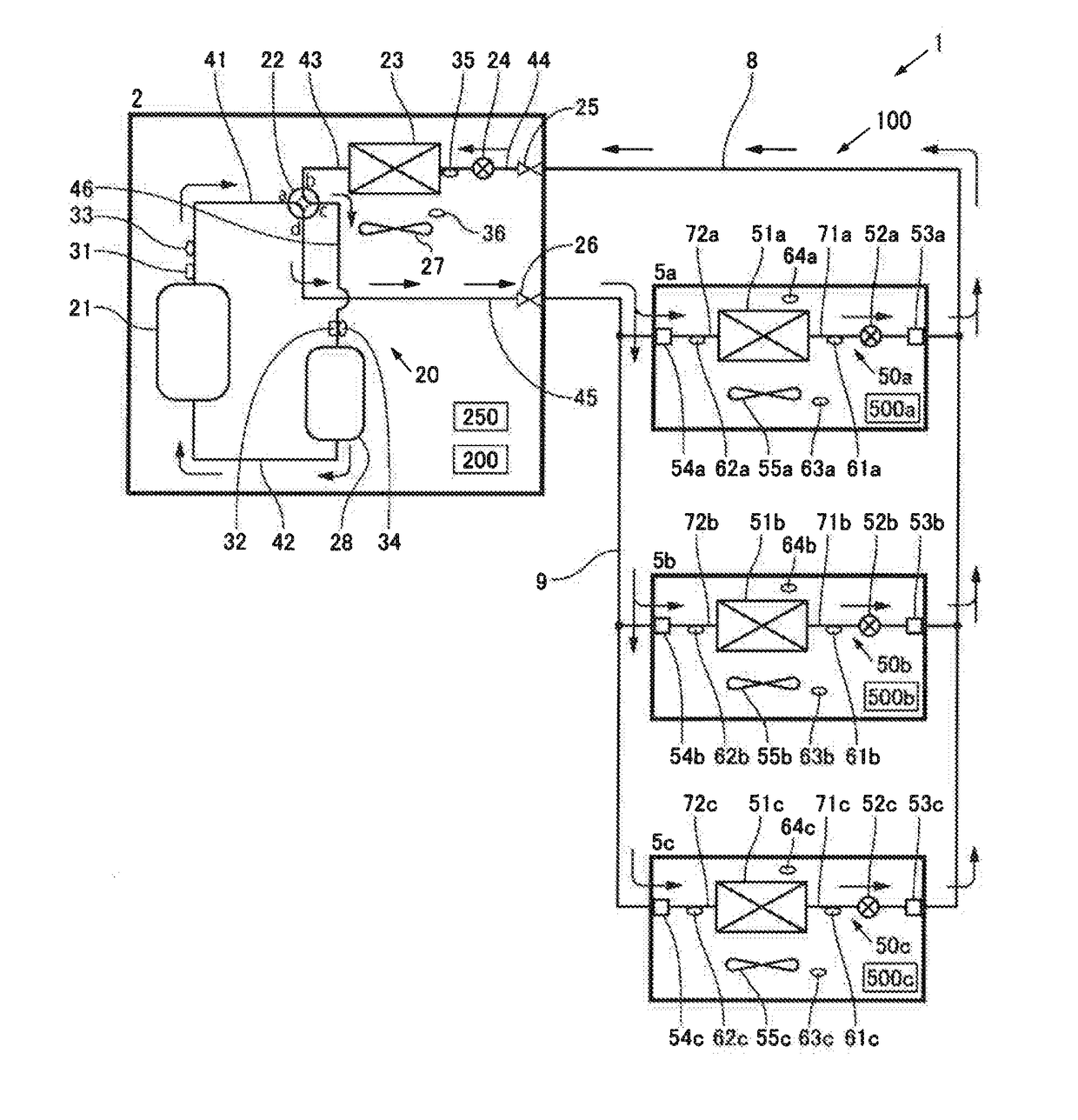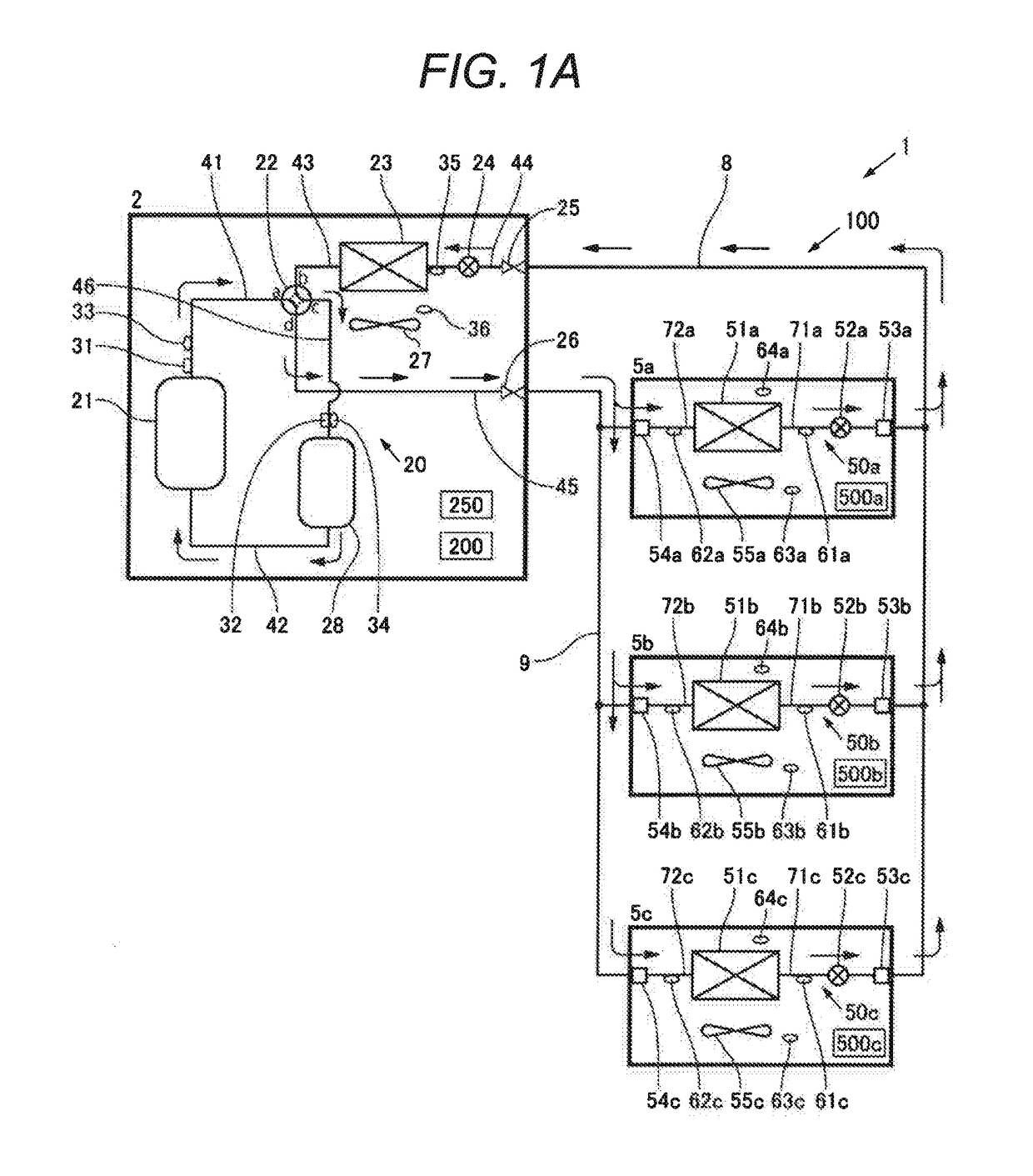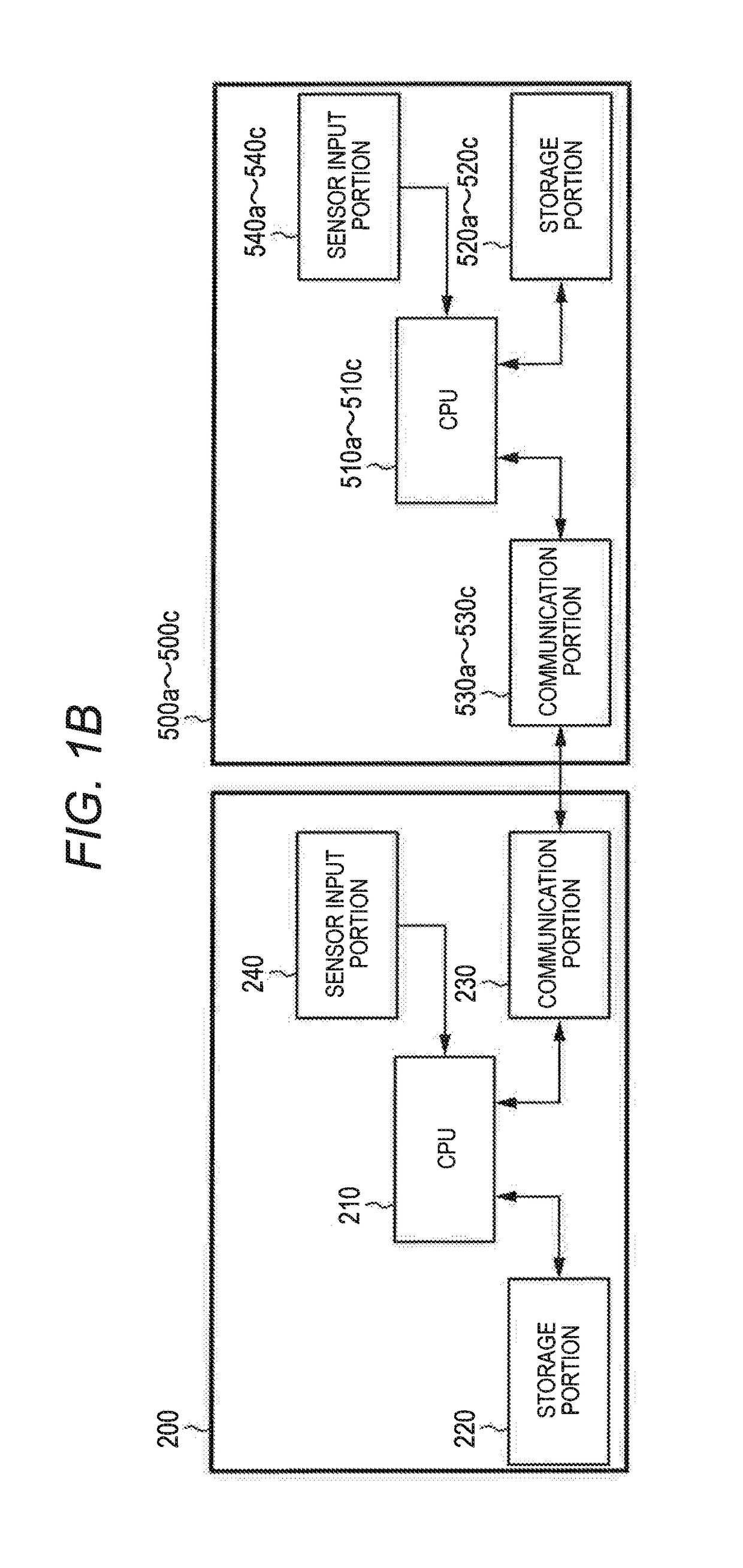Air conditioner
a technology for air conditioners and air conditioners, applied in the field of air conditioners, can solve the problems of insufficient cooling ability, insufficient cooling ability of refrigerant flowing in the indoor unit, and difficulty in obtaining sufficient cooling ability, and achieve the effect of sufficient heating ability
- Summary
- Abstract
- Description
- Claims
- Application Information
AI Technical Summary
Benefits of technology
Problems solved by technology
Method used
Image
Examples
first embodiment
[0021]As shown in FIG. 1A and FIG. 2, an air conditioner 1 of the present embodiment is provided with one outdoor unit 2 installed on the roof of a building and three indoor units 5a to 5c installed on the floors of the building, respectively, and connected in parallel to the outdoor unit 2 by a liquid pipe 8 and a gas pipe 9. Specifically, the liquid pipe 8 has its one end connected to a closing valve 25 of the outdoor unit 2 and has its other end branched to be connected to liquid pipe connection portions 53a to 53c of the indoor units 5a to 5c. The gas pipe 9 has its one end connected to a closing valve 26 of the outdoor unit 2 and has its other end branched to be connected to gas pipe connection portions 54a to 54c of the indoor units 5a to 5c. This constitutes a refrigerant circuit 100 of the air conditioner 1.
[0022]First, the outdoor unit 2 will be described. The outdoor unit 2 is provided with a compressor 21, a four-way valve 22, an outdoor heat exchanger 23, an outdoor expa...
second embodiment
[0076]Next, a second embodiment of the present invention will be described by using mainly FIG. 4. What is different from the first embodiment is that in the second embodiment, the refrigerant amount balance control is executed from the point of time when it is determined that there is an indoor unit where heating ability is not displayed whereas in the first embodiment, the refrigerant amount balance control is executed from the time of start of heating operation (precisely, from when the refrigerant circuit 100 is stabilized). Detailed description of points other than this, that is, the components of the air conditioner 1 and the state of the refrigerant circuit 100 at the time of heating operation is omitted since it is the same as that of the first embodiment.
[0077]As described in the first embodiment, if the refrigerant amount balance control is executed, in the indoor unit where the refrigerant supercooling degree is higher than the average refrigerant supercooling degree of t...
PUM
 Login to View More
Login to View More Abstract
Description
Claims
Application Information
 Login to View More
Login to View More - R&D
- Intellectual Property
- Life Sciences
- Materials
- Tech Scout
- Unparalleled Data Quality
- Higher Quality Content
- 60% Fewer Hallucinations
Browse by: Latest US Patents, China's latest patents, Technical Efficacy Thesaurus, Application Domain, Technology Topic, Popular Technical Reports.
© 2025 PatSnap. All rights reserved.Legal|Privacy policy|Modern Slavery Act Transparency Statement|Sitemap|About US| Contact US: help@patsnap.com



